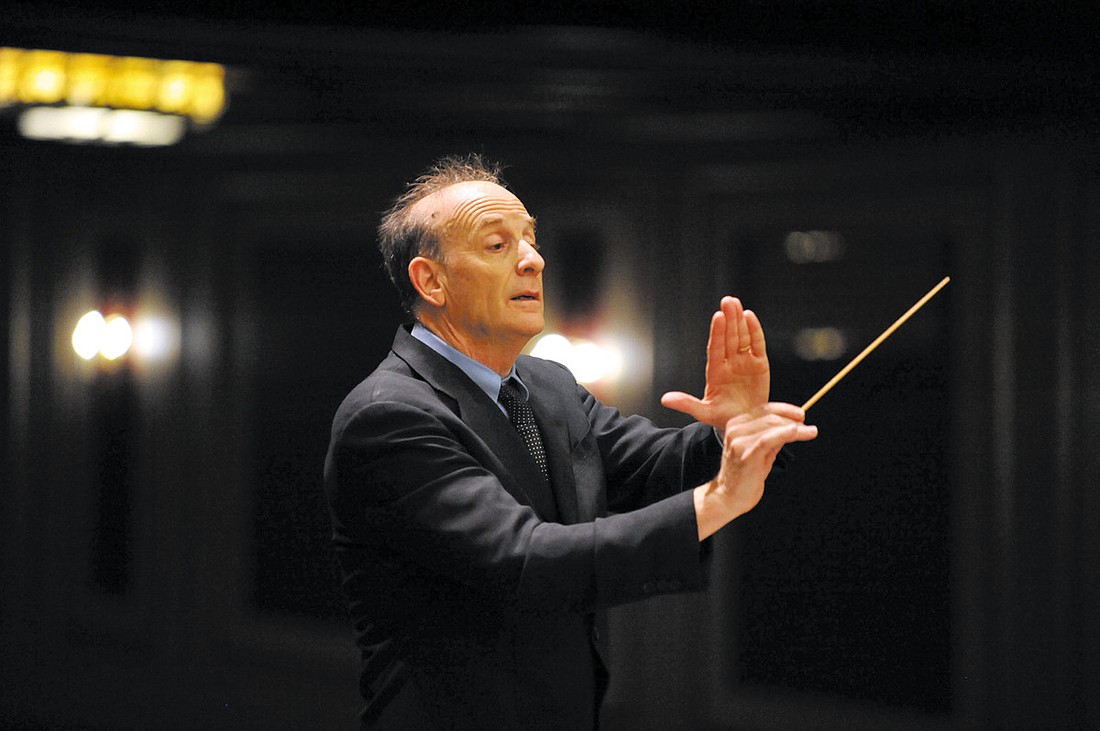- November 25, 2024
-
-
Loading

Loading

Just when you thought it couldn’t get any better, it did. Last Saturday night as the outside temperature was dropping from cool to cold, inside the Van Wezel Performing Arts Hall the Sarasota Orchestra, guest conductor Larry Rachleff and violinist Benjamin Beilman were raising it to a fever pitch with an evening of brilliant performances.
Rachleff has conducted the mostly student orchestra of the Sarasota Music Festival on several occasions, but this is the first time he has appeared with the Sarasota Orchestra on a Masterworks Series, and everyone was excited and impressed — musicians, conductor and audience. Conducting without a score, Rachleff brought lyricism, clarity, knowledge and sheer joy of beautiful music making to his festive program of orchestral showpieces.
Violinist Beilman may be young in years, but he plays with the technique, tone and musicality of a completely seasoned virtuoso. Samuel Barber’s Violin Concerto was once thought to be unworthy of performance, since the first two movements are unashamedly romantic and decidedly nonvirtuosic. Beilman’s lush sound brought forth all of the rhapsody and meditation of the first two movements, aided by some lovely playing by oboist Adam De Sorgo, and then burst forth in a dazzling show of technique and control in the nonstop frenzy of the final movement.
When the concert began with Berlioz’s “Roman Carnival Overture,” we immediately knew this was to be a special event, as conductor and orchestra brought new excitement to this perennial favorite, enhanced by the English horn solo of Nicholas Arbolino.
Everything about the concert was special, but for me the highlight of the evening was the masterful performance of Bernstein’s “Symphonic Dances” from “West Side Story,” honoring his centennial year. I’ve been hearing this piece for many years, played by many orchestras, and this performance is at the top of my list. Rachleff and the orchestra clearly enjoyed bringing out all the details of Bernstein’s score, from finger snaps, shouts of “mambo,” and the driving rhythms of George Nickson and his percussion section, to the contrapuntal intricacies of the “Cool” fugue and the heartbreaking finale, leaving the audience in awed silence until they broke forth in thunderous applause.
Stravinsky’s “Firebird” suite, performed in the 1919 version, is an early display of this composer at his romantic best, occasionally punctuated by the driving rhythms that would become almost overpowering a few years later in his “Rite of Spring.” This suite is another showcase for orchestra, with solos by almost every principal player, each of whom seemed to play more beautifully than the other. The suite’s contrasting sections included soft lyrical passages with the ethereal sound of muted strings, and the wild dance of Katchey, ultimately leading to the finale, which was resplendent with brass and percussion and the full grandeur of Stravinsky’s score.
Throughout the evening Rachleff was in total control of the orchestra, shaping and molding the structure and phrasing of each work with clear and concise cues, while allowing the musicians to shine forth in an evening of truly inspired performance.
With nary a seasonal piece to be heard, this Symphonic Carnival concert served as an inspirational beginning to the holiday season — an extraordinary concert by an extraordinary orchestra, which was justly rewarded by repeated standing ovation.